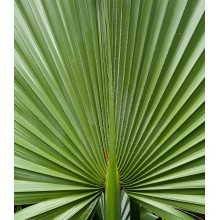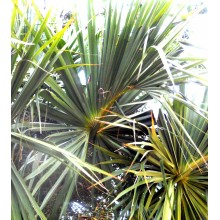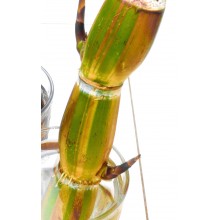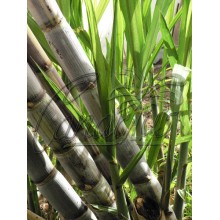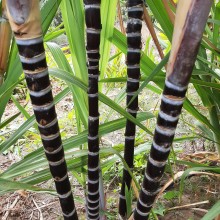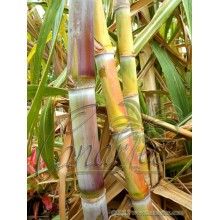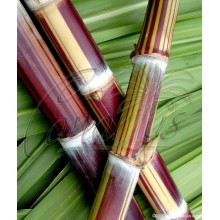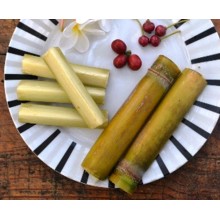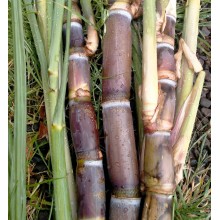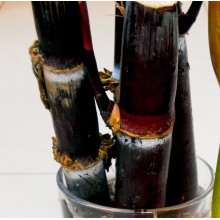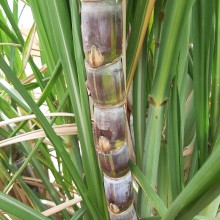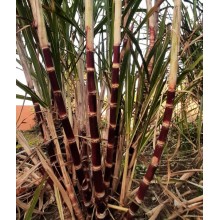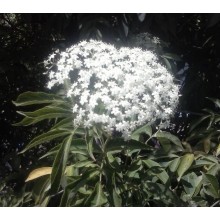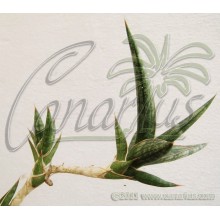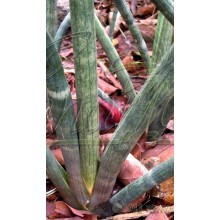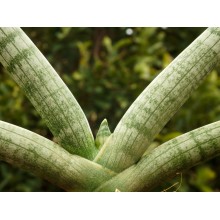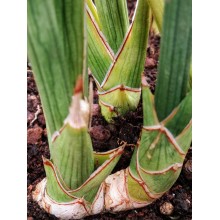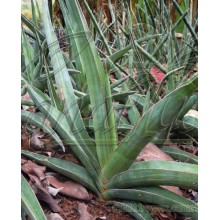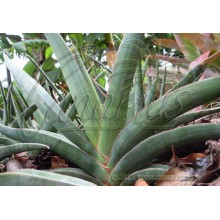Plantes générales Il y a 1904 produits.

Si vous aimez les plantes exotiques, vous venez au bon endroit. Canarius offre le dur-à-trouver des plantes exotiques qui sont rarement disponibles dans les centres de jardin. Notre magasin a des espèces naturelles ainsi que des hybrides rares. Nous offrons des plantes exotiques en provenance des Îles Canaries.
Les commandes sont envoyées partout en Europe et aussi dans le monde entier. Les colis seront atteindre votre maison dans quelques jours après l'expédition (mais nous avons aussi besoin de quelques jours pour le traitement). N'hésitez pas à nous contacter si vous avez des questions.
Sous-catégories
-
Succulentes
Les plantes les plus intéressantes habitent dans les déserts du monde et les zones sèches. Canarius propose une sélection croissante de plantes succulentes de qualité maximale, car elles sont cultivées à l'extérieur en plein soleil des Canaries.
Les succulentes ou «plantes grasses» sont des espèces de rétention d'eau, adaptées aux conditions sèches. Ils stockent succum (jus, eau) dans leurs feuilles, les tiges ou racines, et ils présentent souvent une apparence robuste et charnue.
-
Exotiques
Les plantes exotiques sont des espèces provenant de contrées éloignées, qui ne sont pas dans leur habitat naturel. Généralement, elles sont à caractère décoratif, elles disposent d’un feuillage dense avec des fleurs de couleur vive et ont une forme inhabituelle… Ci-après, vous pourrez découvrir une grande variété de plantes exotiques, allant des broméliacées, héliconies et palmiers aux plantes d’intérieur.
Les plantes exotiques n'ont pas forcément d'utilité particulière, les collectionneurs achètent ce genre de plantes avant tout pour leur rareté et pour décorer des espaces intérieurs ou en plein air, selon l’environnement.
-
Fruits, Herbes et Plantes Médicinales
Les Fruits, les Herbes et les Plantes Médicinales sont destinées à offrir une meilleure santé. Dans cette section, chaque type de plante offre des propriétés bienfaisantes, que ce soit des arbres fruitiers (le Feijoa, l’Ananas, le Fino de Jete, etc.) et des plantes pour la santé, telles que le Graviola, l’Aloe Vera, le Callisia fragrans, etc. Au sein du métabolisme normal des êtres vivants, l’organisme produit certaines substances à partir de nutriments latents dans l’environnement; certaines de ces réactions chimiques font partie du processus de toutes (ou presque) les espèces. Normalement, les composants utiles sont concentrés dans certaines parties: feuilles, graines, fleurs, etc. Découvrez quelle plante vous est recommandée et achetez-la en ligne!
-
Spécial
Sur canarius.com, nous essayons de repousser les limites du domaine de la botanique. Sur notre boutique en ligne, nous tentons de facilité le processus achat/vente des plantes partout dans le monde. C’est pourquoi, nous cultivons les espèces les plus communes ainsi que les plantes les plus spéciales, comme nous pouvons le voir dans cette section.
-
Sabal minor
Sabal minor
This is the smallest species in the genus Sabal and one of the cold-hardiest. It is native to deciduous forests in the SE U.S.A.
31,80 € -
Sabal yapa - Large
Sabal yapa - Large
h= 30-60 cm - Cont. 22 cm. Caribbean Sabal palm with grey-blue leaves with a bright cream-yellow costa. Juveniles have very wide segments, while adult palms have deeply split blades with thin segments. This palm can take short light frosts. It is a bit more hardy than the similar species Sabal mauritiiformis.
44,20 € -
Saccharum officinarum ' Kō hāpai ' - Pregnant Sugar Cane
Saccharum officinarum ' Kō hāpai ' - Pregnant Sugar Cane
"Hapai" in Polynesian languague means pregnant, because this cane has "bellies, as the internodes are swollen. This is an ancient cultivar of Sugarcane.
35,00 € -
Saccharum officinarum 'Amarilla de San Andres' - Yellow Sugarcan
Saccharum officinarum 'Amarilla de San Andres' - Yellow Sugarcan
Pack of two super-thick cuttings ready to sprout. Yellow stemmed cultivar we got in San Andres, Anaga. This type is widespread in the Canary Islands.
22,80 € -
Saccharum officinarum 'Badila'
Saccharum officinarum 'Badila'
Old, classic sugarcane, with purple-black internodes. It is a great choice for the family orchard because of its thick, compact growth and its beauty. Badila's juice is darker in colour too, It grows erect, straight, short and thick black stalks.
28,80 € -
Saccharum officinarum 'Caña Blanca' - Pink-white Sugarcane
Saccharum officinarum 'Caña Blanca' - Pink-white Sugarcane
Pack of two super-thick cuttings ready to sprout. Stems are yellow-pink with abundant white wax, giving the name Caña Blanca (White Cane). Sugar cane attains 3-5 m (9-15 ft) and grows in tropical to warm Mediterranean climates.
22,80 € -
Saccharum officinarum 'Ceniza Bengala' - Striped Sugarcane
Saccharum officinarum 'Ceniza Bengala' - Striped Sugarcane
ONE super-thick cutting ready to sprout - Striped-stemmed sugar cane with glossy colourful stems with yellow and dark red lines. Very ornamental! Very good flavour and tender skin. Not really "variegated" but still beautifully striped.
28,80 € -
Saccharum officinarum 'Cristal' - Cuban Crystal Sugarcane
Saccharum officinarum 'Cristal' - Cuban Crystal Sugarcane
Traditional Cuban sugar cane, often planted in family orchards.
25,80 € -
Saccharum officinarum 'Florida Red'
Saccharum officinarum 'Florida Red'
Old cultivar of sugarcane from the SE U.S.A., made for chewing, juice, candy-making, syrup production and, last and also sugar production, even if it new cultivars replaced it long ago in the industy.We offer a potted rooted plant.
28,80 € -
Saccharum officinarum 'Ko honua ula' - Black Sugar Cane
Saccharum officinarum 'Ko honua ula' - Black Sugar Cane
"Red earth sugarcane" in Polynesian languague is one of the most beautiful cultivars of this useful crop. Stems and leaves grow in a in a wide range of hues, from purple to black, coated with a white shiny wax, increasing the black-and-white contrast.
29,90 € -
Saccharum officinarum 'Purple Ribbon'
Saccharum officinarum 'Purple Ribbon'
Non-tropical sugarcane which has been traditionally grown in the upper parts of SE USA (coastal Georgia)The juice is deep purple and not yellow, as in most sugarcane cultivars.The flavour is pleasantly grassy and not too sweet.
28,80 € -
Saccharum officinarum ‘Ie‘Ie’
Saccharum officinarum ‘Ie‘Ie’
‘Ie‘ie' is the Hawaiian name for the forest vine Freycinetia arborea, a climbing Pandanaceae with ribbon-leaves similar to those of sugarcane.We offer a potted rooted plant.
43,20 € -
Sansevieria ballyi 12681
Sansevieria ballyi 12681
One mature rosette, 5-8 cm diameter. A miniature creeping Sansevieria, with spiky tight rosettes on stolons. This "Bally 12681" from Kenya is surely the smallest and the cutest of all the species! Easy and fast growing. Good for terrariums and for hanging baskets.
17,20 € -
Sansevieria cylindrica Banded Leaves
Sansevieria cylindrica Banded Leaves
NEW ! Large head with leaves of 30-40 cm - This species has cylindrical smooth leaves with a green-gray banding.Old plants in the ground can reach 1-2 m in height.
6,95 € 13,90 €Prix réduit ! -
Sansevieria cylindrica var. patula
Sansevieria cylindrica var. patula
Patula is the most compact variety of the popular Sansevieria cylindrica. Leaves are cute and chubby, silvery and banded in high light. Solitary plants often resemble a chubby human hand !
18,30 € -
Sansevieria desertii
Sansevieria desertii
This succulent sansevieria has cylindrical, straight upright leaves with a reddish hue.
17,10 € -
Sansevieria ehrenbergii
Sansevieria ehrenbergii
30-40 cm wide. This is a form with green long leaves, originating from Ethiopia or Eritrea. There are some similar plants in Somalia with shorter grayer leaves. Fan-shaped succulent with distichously arrangedthick leaves, of a bright blue-green. Slow growing and still very uncommon in the trade.
9,25 € 18,50 €Prix réduit ! -
Sansevieria ehrenbergii - Large Plant
Sansevieria ehrenbergii - Large Plant
Giant Plant: Perfect 60-70 cm wide fan - Form with green long leaves, probably originating from Ethiopia or Eritrea of this spectacular fan-succulent with thick blue-green leaves. Seldomoffered for sale. Slow growing.,
27,00 € 54,00 €Prix réduit !
Pour le moment, il ya peu de produits dans cette catégorie Plantes générales




















